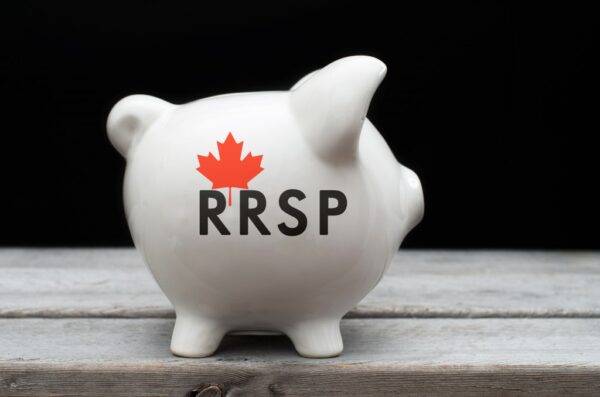A Registered Retirement Savings Plan (RRSP) is a retirement savings and investing vehicle for employees and the self-employed in Canada. Pre-tax money is placed into an RRSP and grows tax-free until withdrawal, at which time it is taxed at the marginal rate.
In other words, it is a way the Canadian Government encourages you to save by offering the option to lower your taxable income by the amount you contribute.
Best Canadian monthly dividend ETF
Best Canadian dividend ETF – Top 16
Here’s an example:
Mike has a taxable income of 90K. If he contributes to his RRSP 15K, then he will reduce his taxable income and thus his taxes. The governement will not tax the 15K (it’s basically sheletered from Tax because it’s in an RRSP).
The intent of this incentive is that you will save that money for your retirement.
Key assumptions here: You income in your retirement is lower than now. Meaning, when you will withdraw money at your retirement you will benefit by paying a lower taxes. This is probably true for most of us.
Pro:
Can be really a powerful tool to reduce your taxable income and save money for retirement. The money you save can be invested for instance in a TFSA or contributed back in your RRSP if you still have room.
Cons:
If you contribute to your RRSP and then needed the money before your retirement, the whole benefit of an RRSP is basically wiped out. This is because not only you will taxes on the amount withdrawn but also any income you made (dividend or capital gains) is also taxable.
Questions and Answers
How to open an RRSP account
You set up a RRSP through a financial institution such as a bank, credit union, trust or insurance company. Your financial institution will advise you on the types of RRSP and the investments they can contain.
What if I withraw from my RRSP to participate in the: Home Buyers’ Plan & Lifelong Learning Plan withdrawals
Under specific circumstances, you can withdraw funds from your RRSP and your RRSP issuer will not withhold tax.
When you withdraw funds from your RRSPs under either of these plans, do not include them as income on your Income Tax and Benefit Return.
What’s the maximum I can contribute
Your RRSP contribution limit for 2020 is 18% of earned income you reported on your tax return in the previous year, up to a maximum of 27,230. For 2021, the dollar limit is $27,830.
Deadline to contribute to an RRSP
March 1, 2021March 1, 2021 is the deadline for contributing to an RRSP for the 2020 tax year. December 31 of the year you turn 71 years of age is the last day you can contribute to your own RRSP. For more information, see RRSP options when you turn 71.
What are the federal tax brackets in Canada for 2020?
| Annual Income (Taxable) | Tax Brackets | Tax Rates | Max Taxes Per Bracket | Max Total Tax |
| Up to $48,535 | The first $48,535 | 15% | $7,280 | $7,280 |
| $48,535 to $97,069 | The next $48,534 | 20.5% | $9,950 | $17,230 ($7,280 + $9,950) |
| $97,069 to $150,473 | The next $53,404 | 26% | $13,885 | $31,115 ($17,230 + $13,885) |
| $150,473 to $214,368 | The next $63,895 | 29% | $18,530 | $49,645 ($31,115 + $18,530) |
| Over $214,368 | Over $214,368 | 33% | n/a | n/a |

